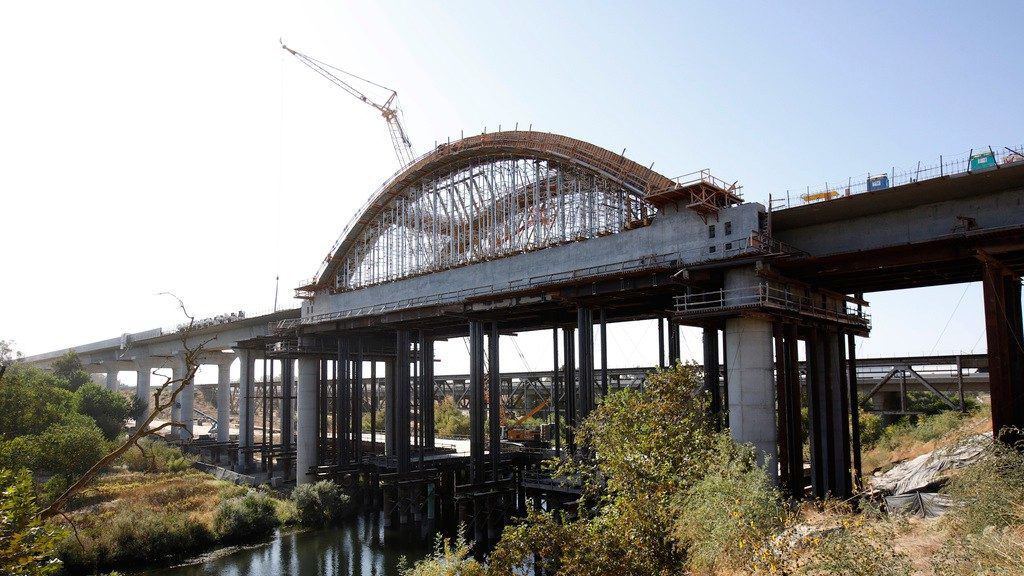Large-scale federal construction projects will need to use workers hired through project labor agreements, or PLAs, the Biden administration announced Monday.
PLAs are collectively bargained agreements that workers and construction contractors agree to before a project begins to keep it on time, on budget and supplied with highly skilled labor.
“We must do everything we can to build a better America,” President Biden said in a statement Monday.
He said the PLA rule will save taxpayer money by keeping federal construction projects on schedule and will help workers with better wages, benefits and safety protections because they were negotiated in advance.
"Workers will have the security and peace of mind that collectively bargained wages and benefits bring, better pathways to good-paying jobs, and stronger health and safety protection," the president said, before recalling an oft-invoked anecdote from his father.
"My father would always say, 'a job is about a lot more than a paycheck. It’s about dignity. It’s about respect,'" Biden said. "He was right, and I’m determined to keep fighting for American workers, who do the highest quality work in the world, to have the dignity and respect they deserve.
The first-of-its-kind agreement requires federal construction projects that cost at least $35 million to use PLAs, which mandate contractors, subcontractors and workers negotiate the terms of the project before it begins. The PLA rule is the result of the president’s Executive Order 14063 from February 2022.
The Biden administration says PLAs will stop federal construction projects from being delayed by strikes or labor walkouts. They also establish protocols for dispute resolution around potential conflicts such as safety issues. While collective bargaining is most often used by unions, the PLA rule is available to non-union workers.
In 2022, shortly after the PLA rule was first proposed, the Associated Builders and Contractors trade association condemned the proposal, saying it would “needlessly increase costs and exacerbate the construction industry’s skilled labor shortage because they exclude almost nine out of 10 workers from participating in these contracts.”
The group said PLAs could increase costs 12-20% and reduce competition from the 87% of construction workers who are not in unions.
The administration anticipates that almost 200,000 workers on federal construction projects will benefit from the new rule, including those working to modernize the Celebrezze Federal Building in Cleveland, Ohio, where contractors and unions on the project have entered into a PLA.
While PLAs have been used on large-scale federal construction projects for almost a century, including building the Hoover Dam in 1936, they have not been used for the majority of high-cost federal construction projects.
The Biden administration said the Department of Energy plans to incorporate PLAs into the $7 billion regional clean hydrogen hubs program it announced in October to create a national clean hydrogen network for heavy-duty industries such as transportation.



